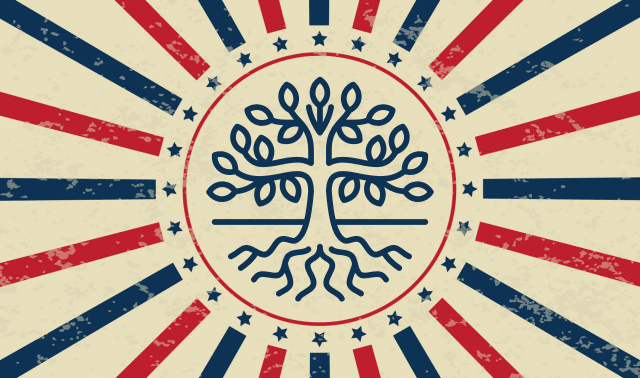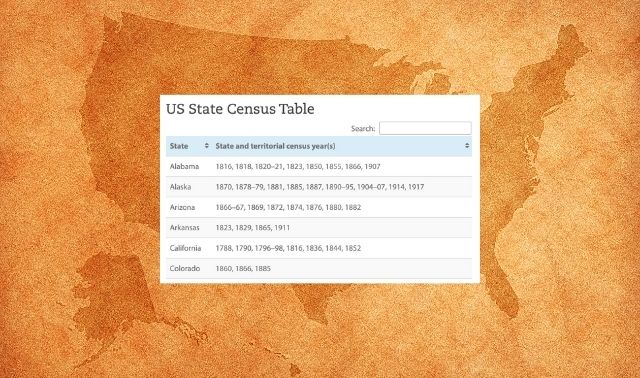Rush to settle
Waterfall of records
While many Buffalo and Erie County records aren’t online, this isn’t a brick wall for your family history research. Many records are on paper in city and county offices or on microfilm at repositories. To start, see a resource guide, lists of the Erie County clerk’s records and a list of records at the Buffalo City Clerk’s Inactive Records Center.
A must-visit repository is the Buffalo and Erie County Public Library’s (BECPL) Grosvenor Room, which houses materials for Buffalo, Erie County and Western New York. That includes thousands of local histories and genealogies, microfilmed newspapers, more than 400 scrapbooks (1930-1975) and city directories as far back as 1828. Other records you’ll use include:
Vital records: Statewide vital record-keeping in New York began in 1881, but the state health department has Buffalo records starting only in 1914. Records are closed for 75 years or if the person named is alive, though exceptions can be made if you can prove you’re a descendant.
Depending on the time period and vital event, the records you seek may be on the city or county level. The vital records access chart at BuffaloResearch.com will tell you what’s available and where to find it. Buffalo City Hall’s Vital Statistics office has birth records starting in 1878. The Erie County clerk’s office has Buffalo records from 1881 to 1913.
The Erie County clerk has marriage records for 1878 to 1935; the Buffalo city clerk has them from 1877 to the present. Divorce records begin in 1830. Some are sealed, but otherwise they follow the same privacy restrictions as marriage records. The Erie County clerk has files from 1957 to present.
At the BECPL, you’ll find the New York State Vital Records Index, which contains births and marriages from 1881 and deaths from 1880. The Western New York Genealogical Society collections at the BECPL include a Vital Index of Early WNY Families, a file of approximately 120,000 cards compiled from 75 sources of births, deaths and marriages.
Cemetery records: Find a comprehensive list of cemetery resources here. Many cemetery records are on microfilm at the BECPL.
Church records: Dating back to the early 1800s, Buffalo church records are mostly with parishes, but some are available online. BECHS has a resource listing. The library’s microfilmed records cover mostly Catholic, Episcopal and Methodist churches. The BECPL also has microfilmed church records, mostly Roman Catholic.
Buffalo is home to a large Jewish community from Germany, Russia, Polish and elsewhere. Find information about local Jewish history and resources at the Jewish Genealogical Society of Buffalo website.
Probate records: The Erie County clerk serves as clerk for the Supreme and County Court of Erie County. Wills and probate files are in the Erie County Surrogate’s Court for the 8th District. You can use a searchable index on site.
Immigration: Niagara Falls to Buffalo’s north ensures no direct water route from Europe; most immigrants arrived at New York City and traveled west to Buffalo. Some crossed the Niagara River from Canada, or arrived by water from another port. The National Archives <archives.gov> and Family History Library (FHL) have microfilmed records for about 1 million of these arrivals at Buffalo and nearby ports from 1902 to 1952.
The Erie County Clerk’s office is the best resource for naturalization documents from 1827 to 1929. Naturalizations for Buffalo (1839-1895) and Erie County (1831-1929) are on microfilm at the FHL. Order post-1906 naturalization records from the US Citizenship and Immigration Service’s genealogy site.
Fast Facts
Incorporated: 1832
Nicknames: The Queen City, The Nickel City, City of Light, City of Good Neighbors, Queen City of the Lakes
State: New York
County: Erie
County seat: Buffalo
Area: 52.5 square miles
Primary historical ethnic groups: German, Irish, Italian, Polish
Primary historical industries: automobile production, banking, grain storage, shipping and transportation, steel production
Famous residents: Harold Arlen, Christine Baranski, Wolf Blitzer, Shirley Chisholm, Grover Cleveland, F. Scott Fitzgerald, Orel Hershiser, Tim Russert, James Whitmore
Population
Toolkit
Are Your Ancestors in the Historical Society?
Buffalo East Side Neighborhood
The Buffalonian
BuffaloResearch.com
Erie County New York History
FamilySearch Research Wiki: Buffalo, NY
History of Italian-Americans in Buffalo
Publications
Buffalo Unbound by Laura Pedersen (Fulcrum Publishing)
High Hopes: The Rise and Decline of Buffalo, New York by Mark Goldman (State University of New York)
History of the Diocese of Buffalo by Thomas Donohue (The Buffalo Catholic Publication Co.)
Organizations and Archives
Buffalo and Erie County Historical Society Research Library
25 Nottingham Court, Buffalo, NY 14216, (716) 873-9644
Buffalo and Erie County Public Library
Grosvenor Room, Central Library, 1 Lafayette Square, Buffalo, NY 14203, (716) 858-8900
Buffalo Irish Genealogical Society
Buffalo Irish Center, 245 Abbott Road, Buffalo, NY 14220
City of Buffalo, Vital Records
1308 City Hall, 65 Niagara Square, Buffalo, NY 14202, (716) 851-5431
Erie County Clerk’s Office
92 Franklin St., Buffalo, NY 14202, (716) 858-8785
New York State Department of Health
Vital Records Section, Genealogy Unit, Box 2602, Albany, NY 12220
Polish Genealogical Society of New York State
12645 Route 78, East Aurora, NY 14052
Historic Sites
14 Allen St., Buffalo, NY 14202, (716) 881-1024
More than 700 buildings, along with two parks designed by Frederick Law Olmstead, make up this historic district filled with grand old homes, shops and restaurants.
2. The Buffalo & Erie County Historical Society Museum
25 Nottingham Court, Buffalo, NY 14216, (716) 873-9644
Designed by local architect George Cary and built for the Pan-American Exposition in 1901, this museum contains the country’s most extensive collection of Buffalo and Western New York artifacts.
3. Buffalo City Hall
65 Niagara Square, Buffalo, NY 14202, (716) 851-4200
This masterpiece of art and architecture, completed in 1931, is topped with a free observation deck providing fantastic views of the city, Lake Erie and the Niagara River. Free tours start each day at noon in the main lobby.
4. Darwin Martin House
125 Jewett Parkway, Buffalo, NY 14214, (716) 856-3858
Designed by Frank Lloyd Wright between 1903 and 1905, this home in the Parkside neighborhood is considered one of the most important projects from his Prairie School period. Reservations are recommended for tours.
5. Theodore Roosevelt Inaugural National Historic Site
641 Delaware Ave., Buffalo, NY 14202, (716) 884-0095
The circa-1840 residence is where Theodore Roosevelt was inaugurated after the death of President William McKinley in 1901.
Records at a Glance
Begin: 1876 for Buffalo, 1881 for Erie County
Privacy restrictions: Birth records are closed for 75 years after the birth, or as long as the person named is living (with an exception for descendants with proof of the relationship).
Research tips: Buffalo City Hall’s Vital Statistics office has records starting in 1876; the Erie County Clerk’s office has records from 1881 to 1913 for Buffalo only. The fee for written research requests is $5 for every two years per record type.
- Begin: 1828
- Research tips: A transcription of the first city directory from 1828 is available online. BuffaloResearch.com has a list with links to online versions of Buffalo directories. These also are available at the BECHS Research Library and the BECPL.
- Begin: 1852
- Privacy restrictions: All death records are closed for 50 years, with exceptions for descendants.
- Research tips: Request early death records from the Buffalo city clerk.
Deeds
- Begin: early 1800s
- Research tips: Research by Grantor or Grantee name must be done in person at the Erie County Clerk’s office.
- Begin: 1878
- Privacy restrictions: All marriage records are closed for 50 years and both spouses must be deceased; exception for descendants.
- Research tips: Erie County clerk has records covering 1878 to 1935; Buffalo city clerk has records from 1877 to the present.
Timeline
1758 Chabert Joncaire builds first white settlement in Buffalo area
1825 Erie Canal completed
Related resources
The Family Tree Sourcebook
New York Genealogy Crash Course on-demand webinar
New York Research Guide download



